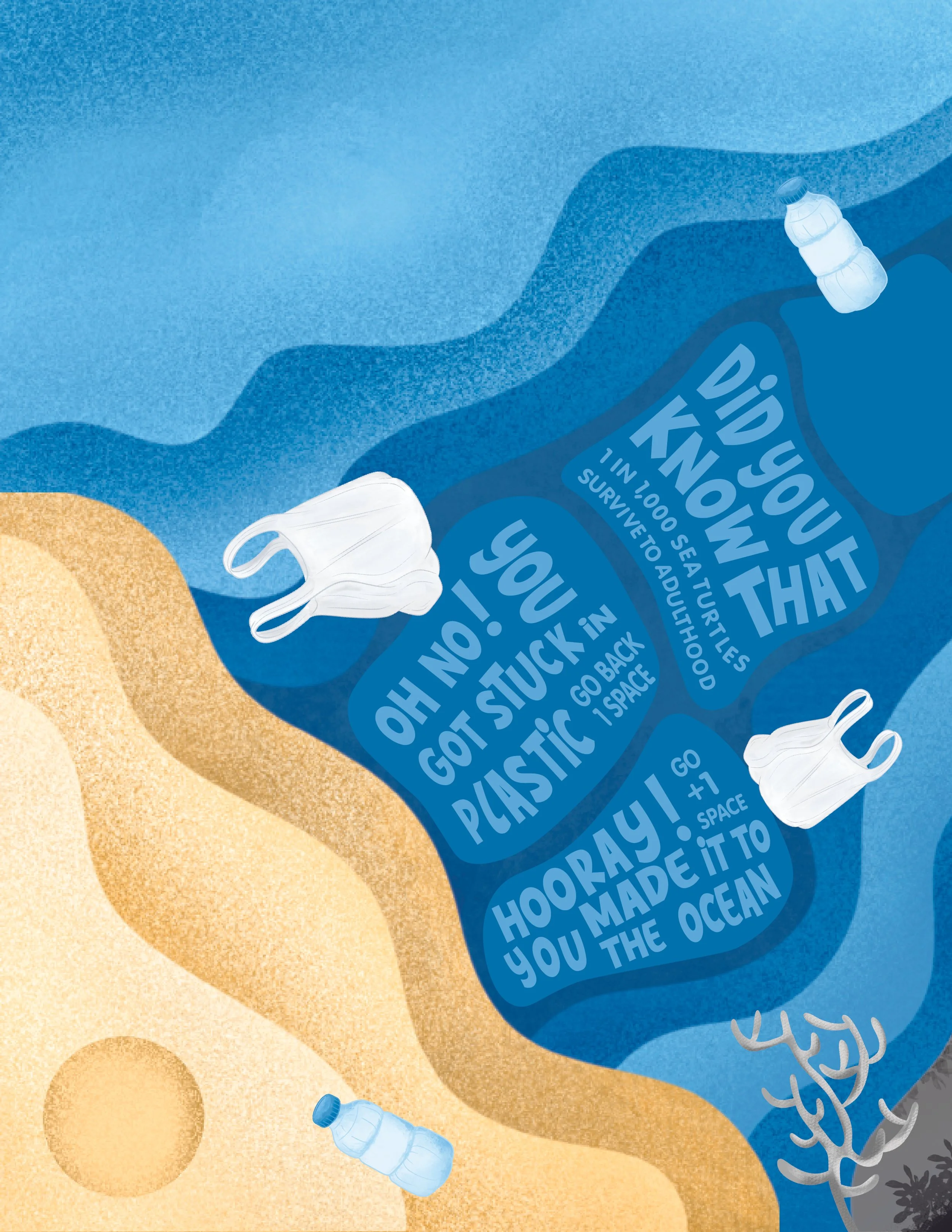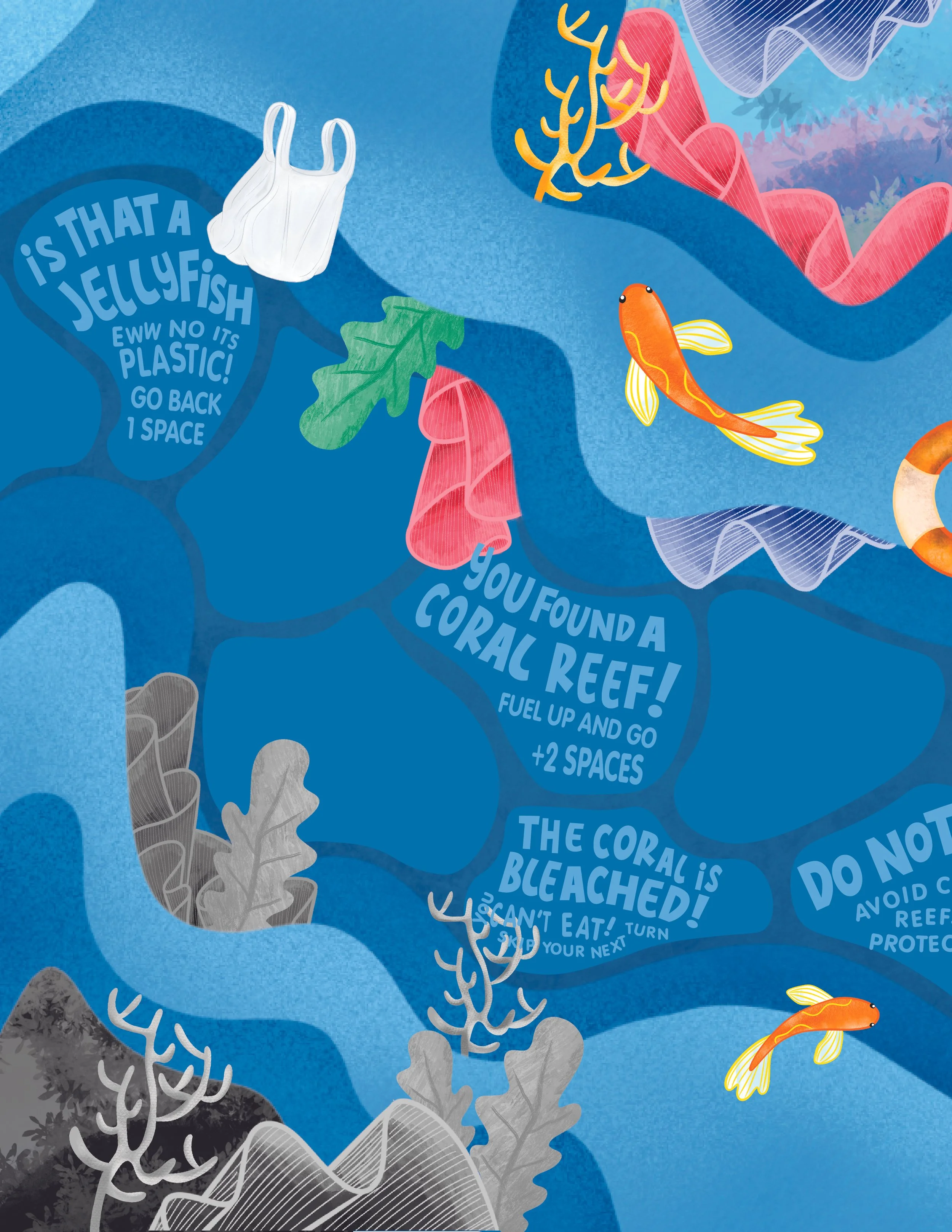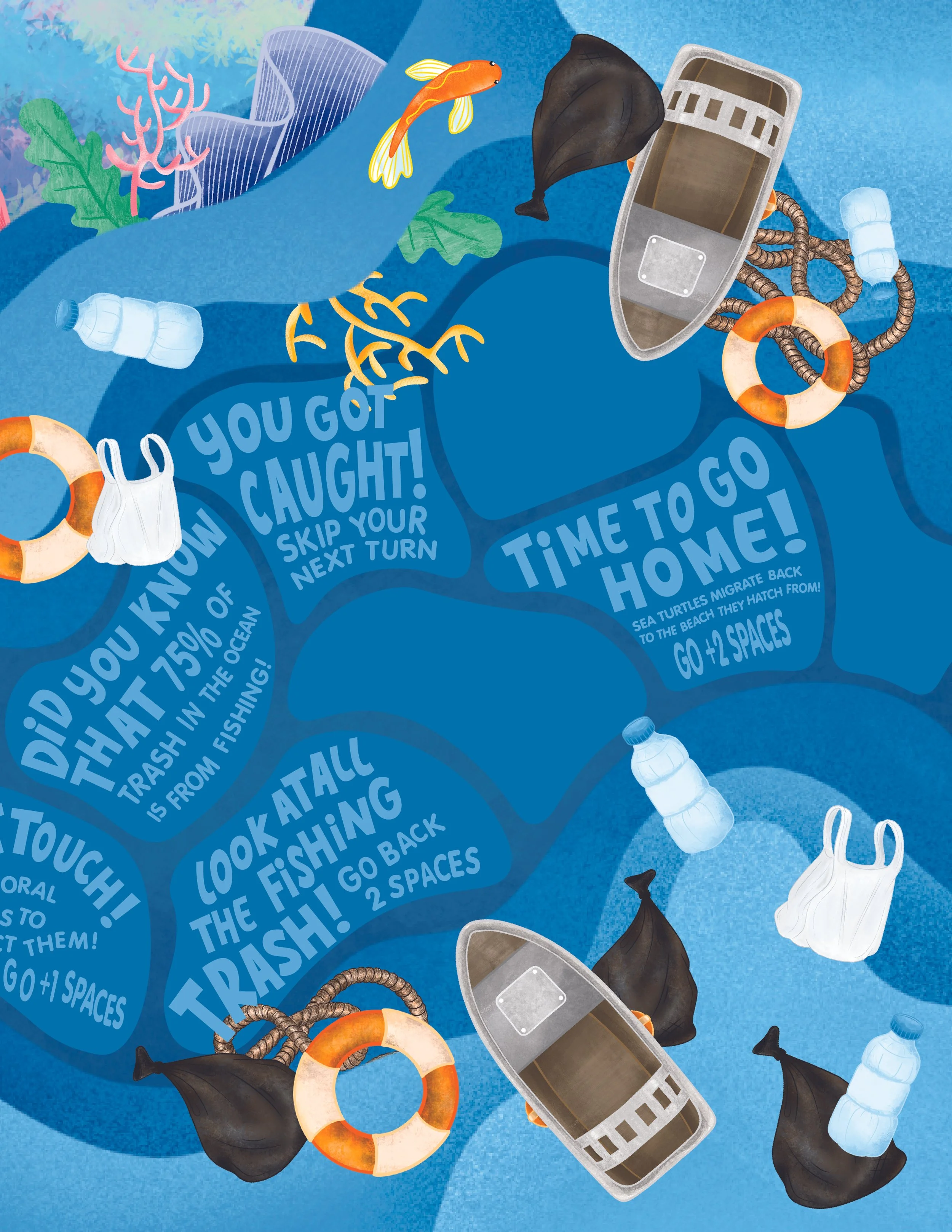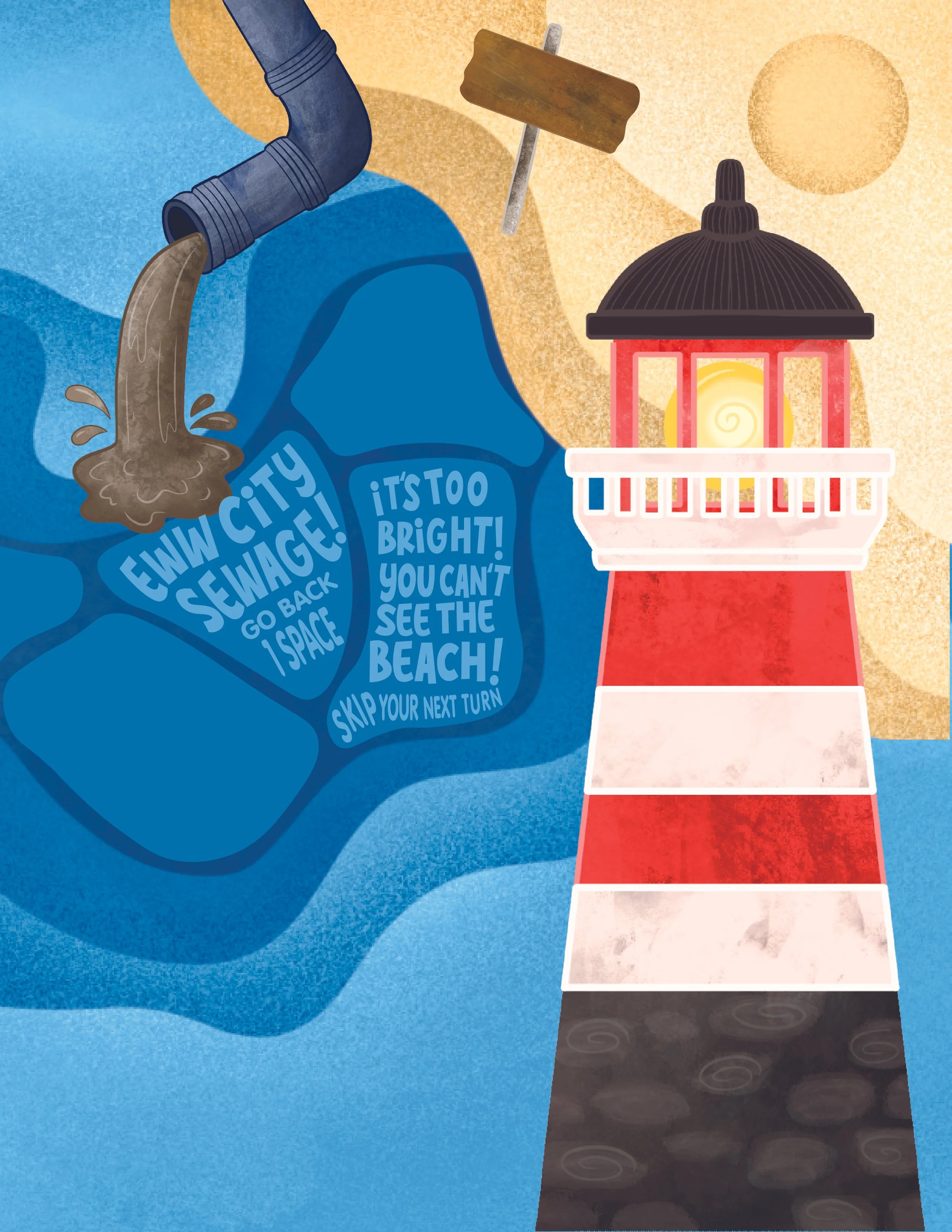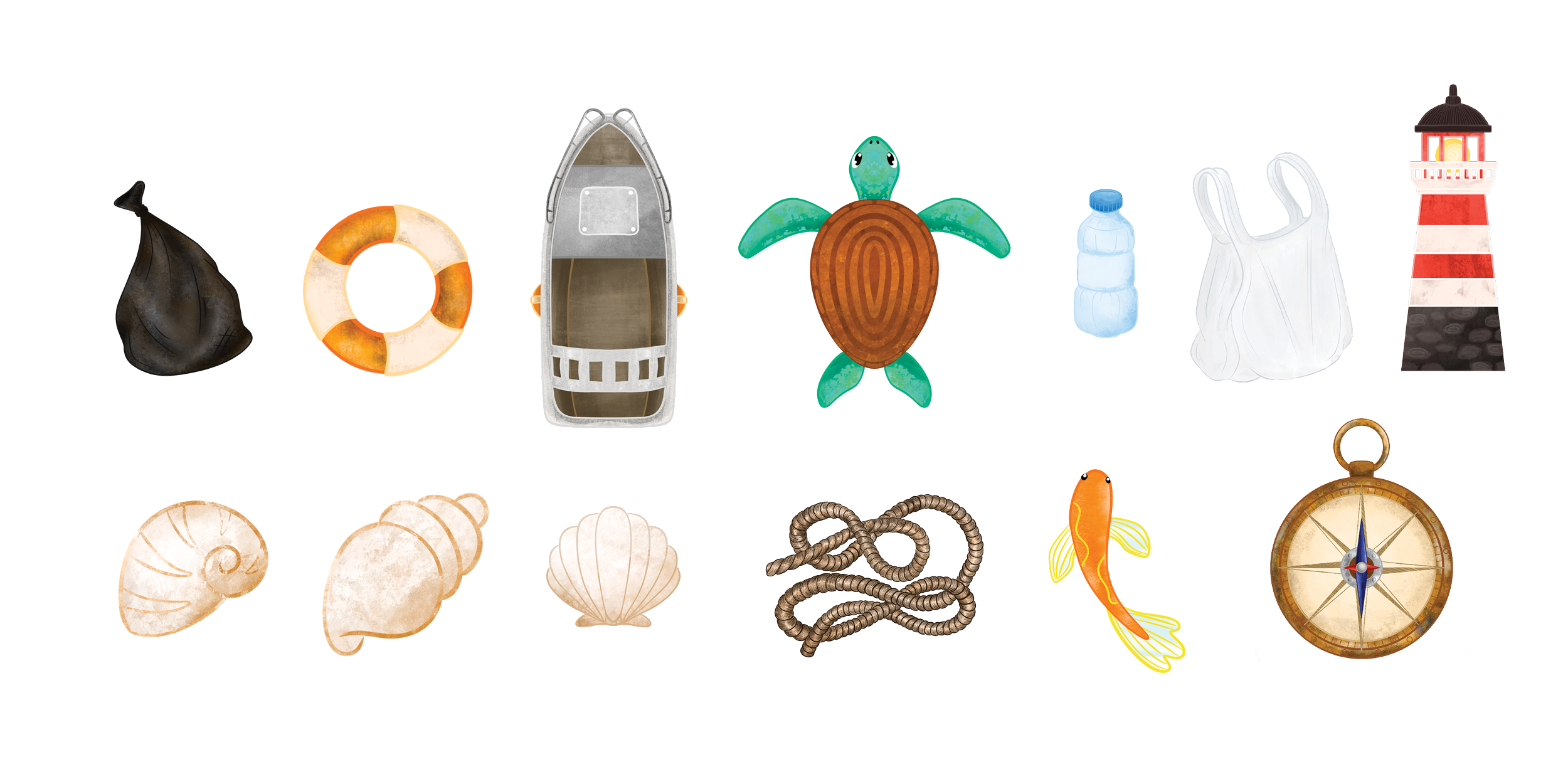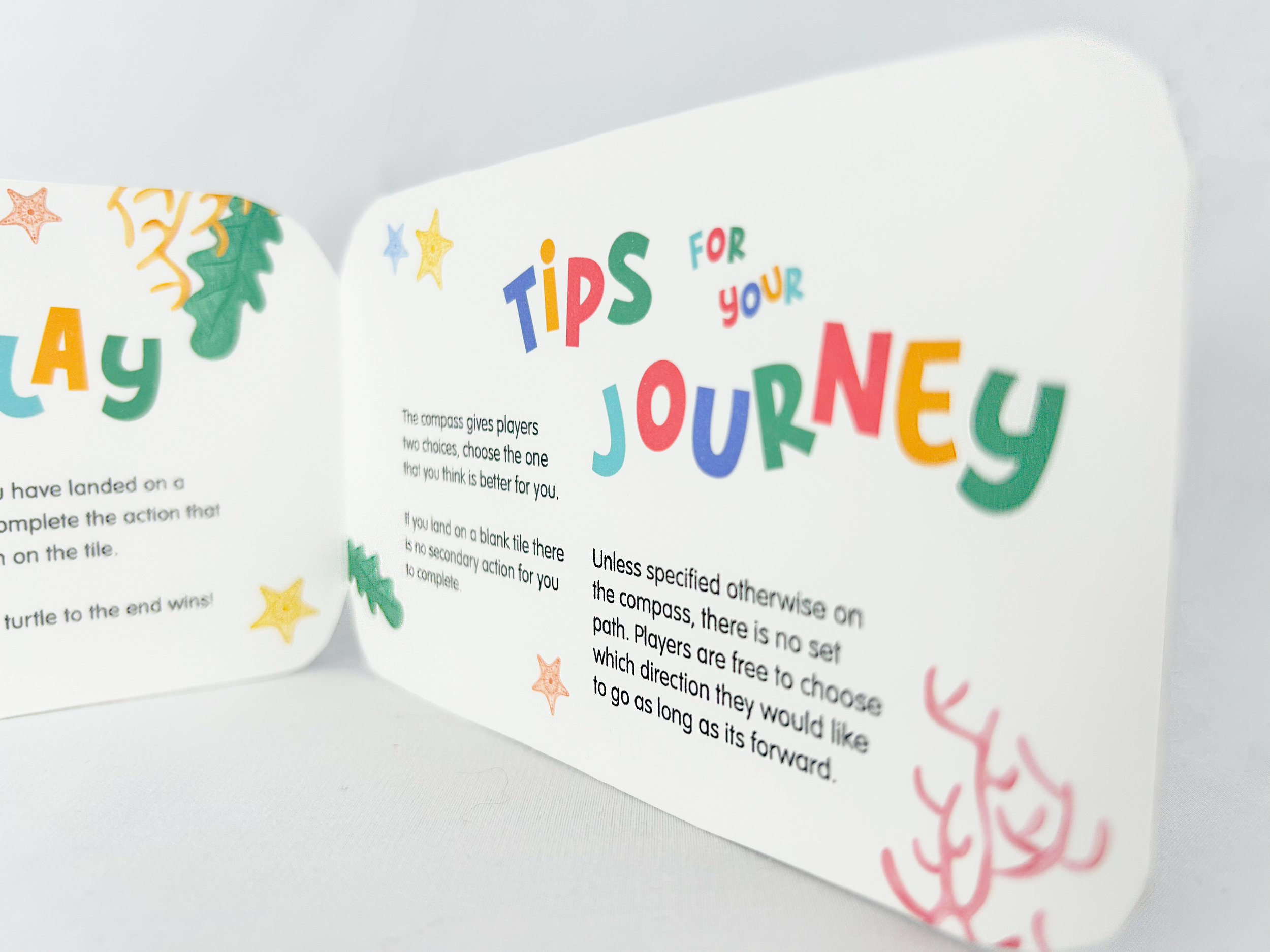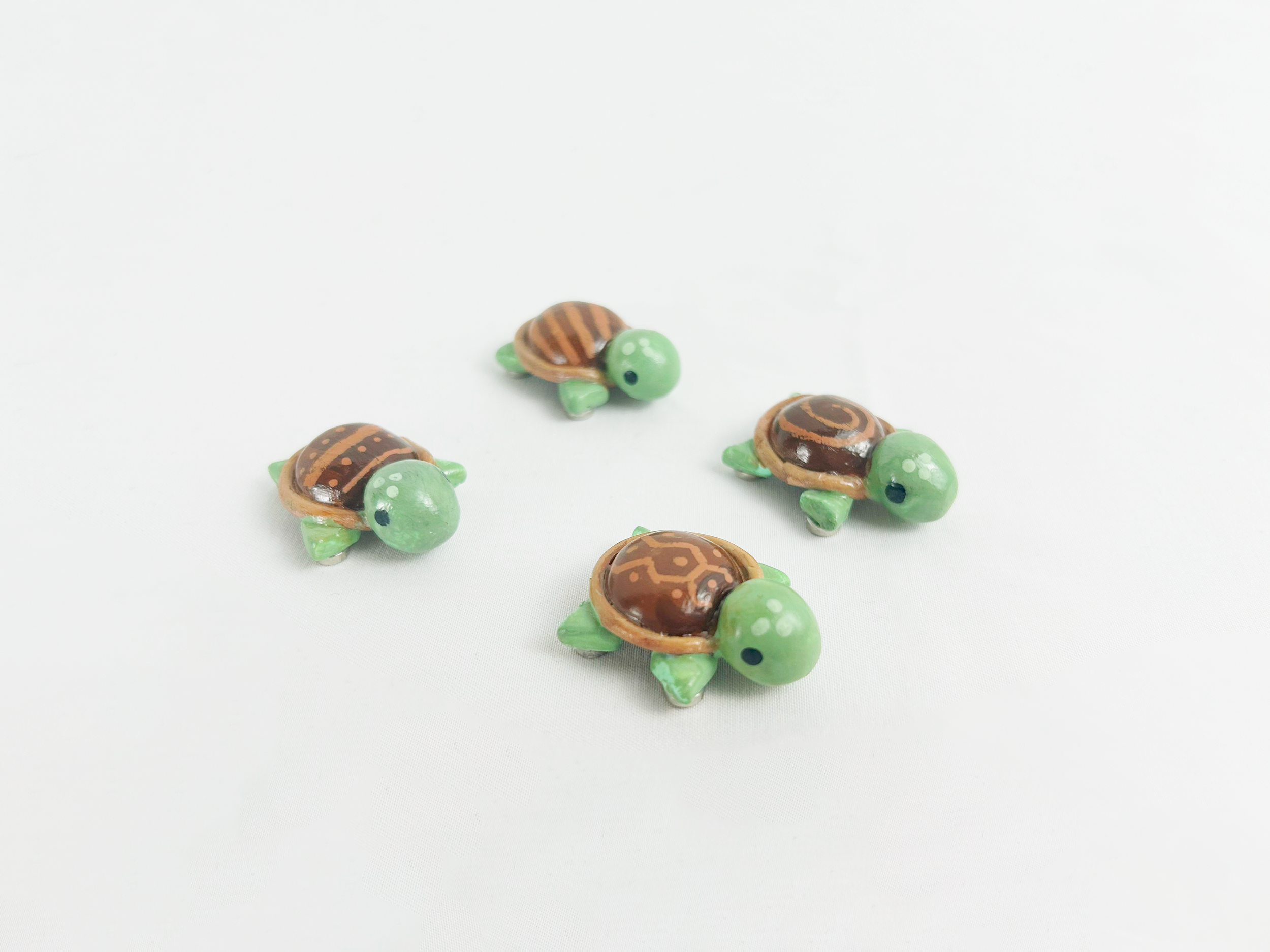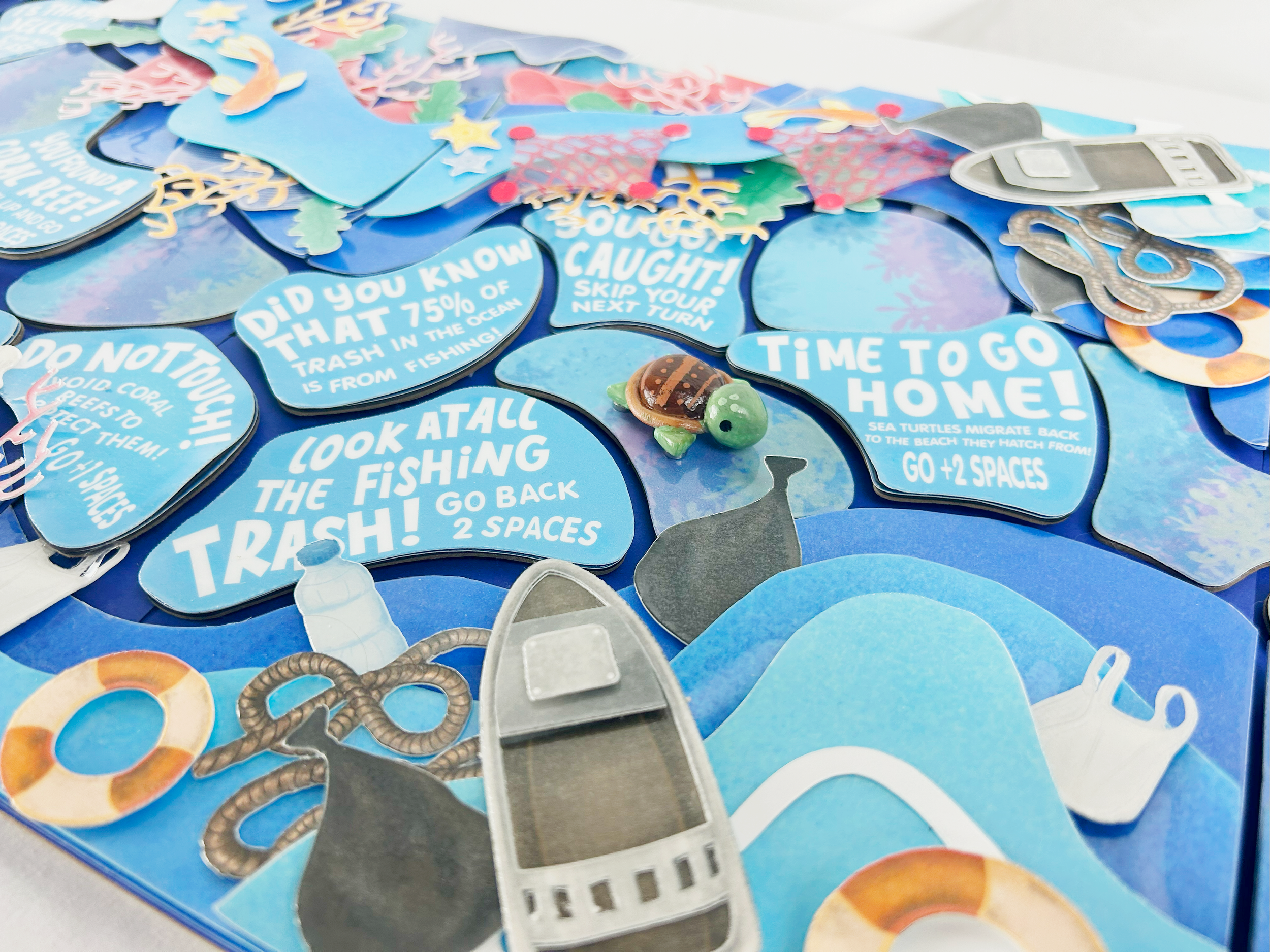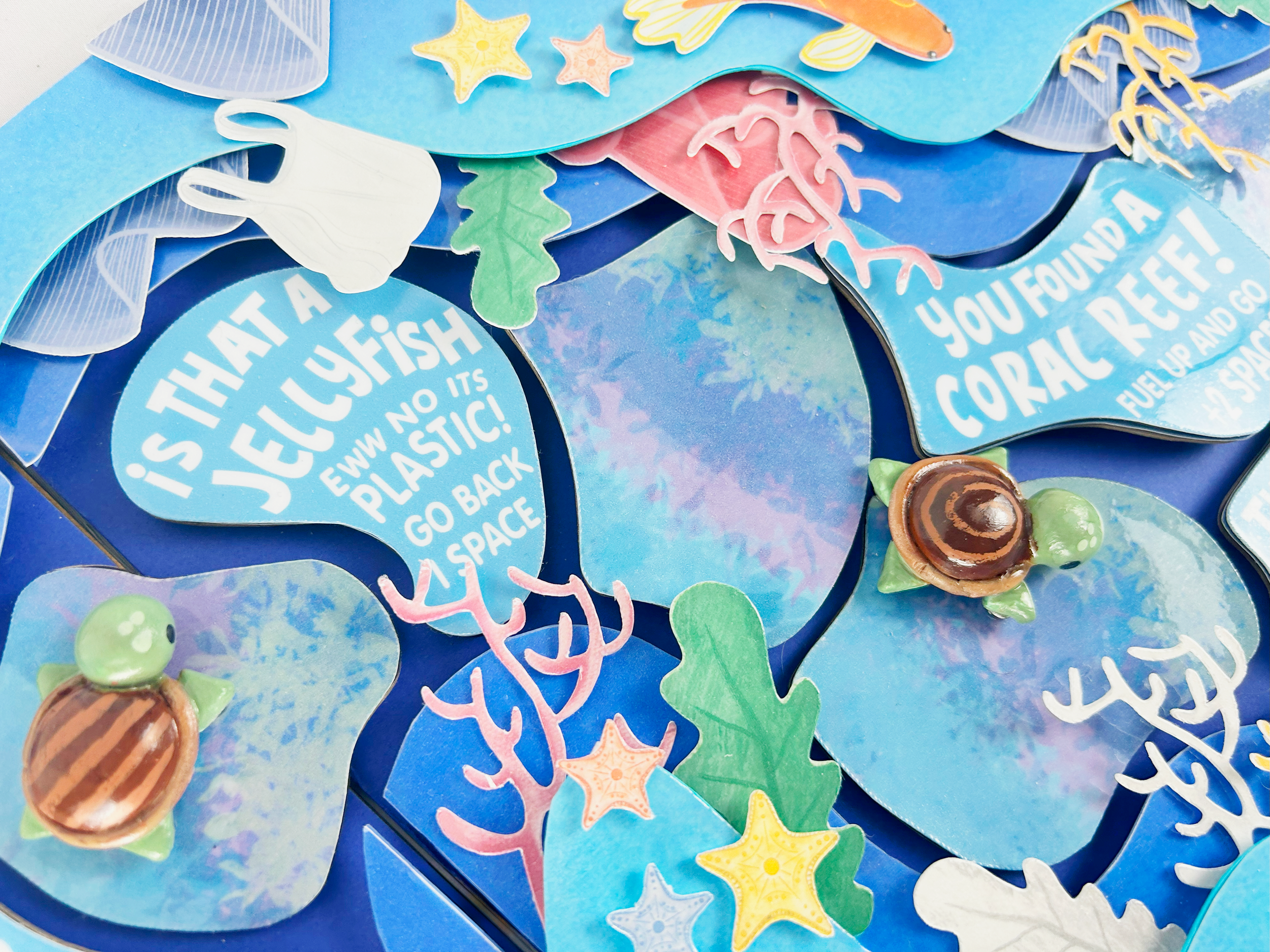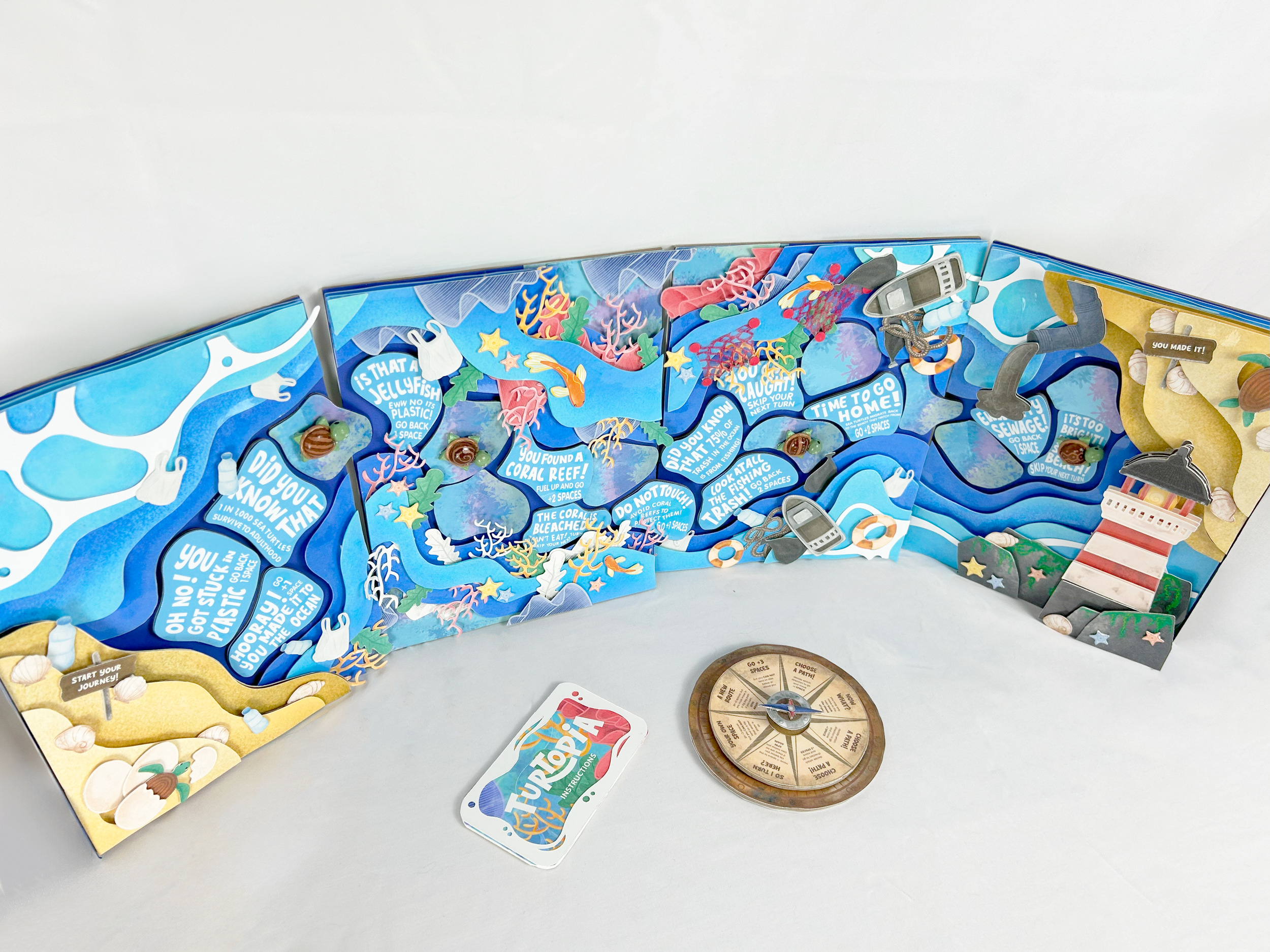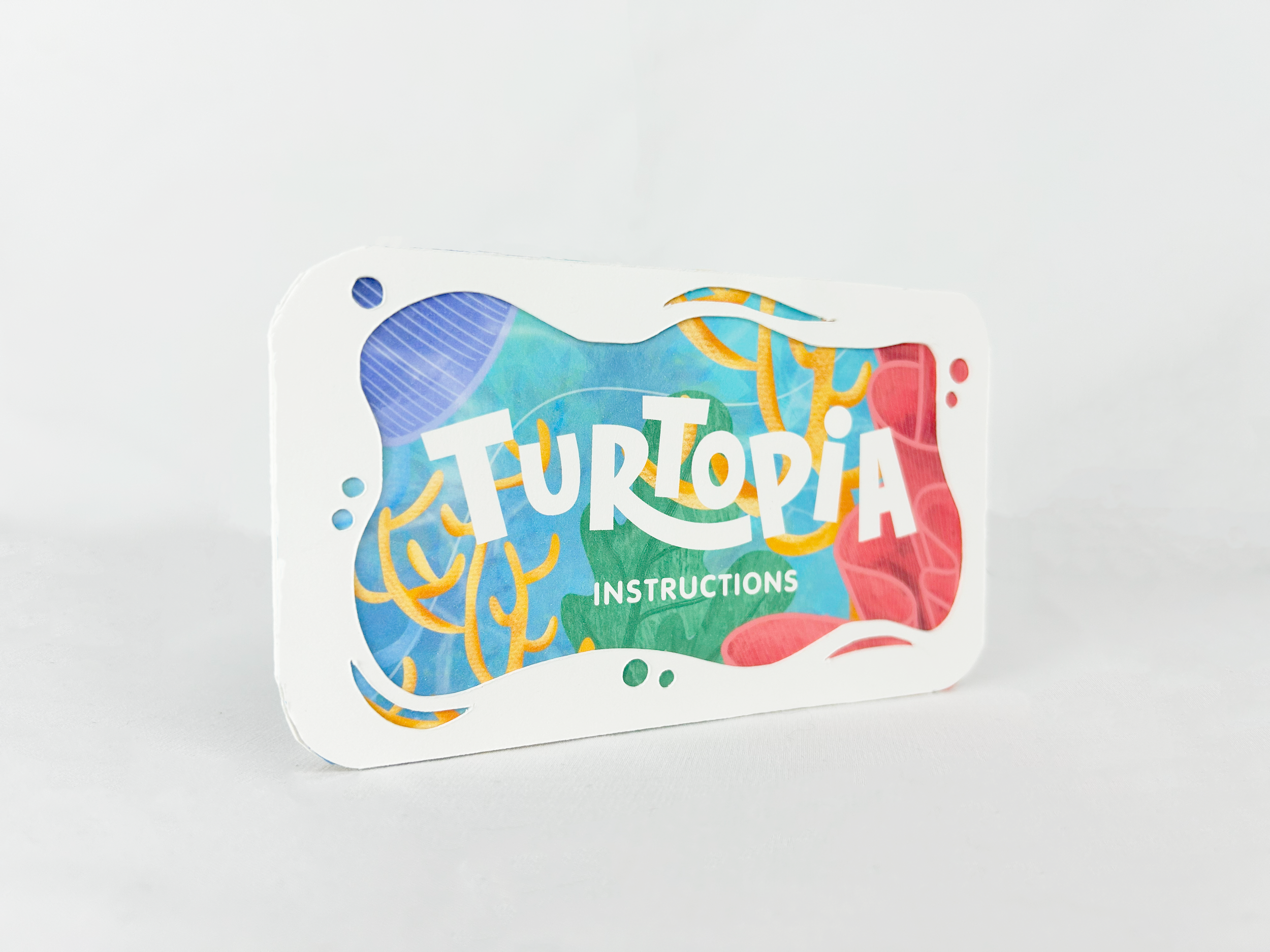APRIL 2024
TURTOPIA
Turtopia is my senior thesis project for the BFA Graphic Design Program at San Jose State University. Turtopia’s purpose was to push board game visuals to create a 2D/3D experience that also teaches players about ocean conservation and habitat pollution.
CONCEPTUAL DESIGN, BRANDING, BOARD GAME DESIGN, INTERACTIVE DESIGN, EDUCATION, EXPERIENCE DESIGN, LOGO DESIGN, TYPOGRAPHY, ENGINEERING
Although I did have plans to make the board game focus on the educational aspects being embedded into the gameplay, I ultimately decided to push for a visual first approach. This was inspired from looking at reference images and realizing that board game visuals are secondary to the mechanics, and also are influenced by gameplay. Instead, I wanted to flip it, with the game play being influenced by the visuals and the structure itself. Doing this allowed me to create a product that could be seen as an interactive art piece, and to experiment with the concept of a board game.
IDEATION
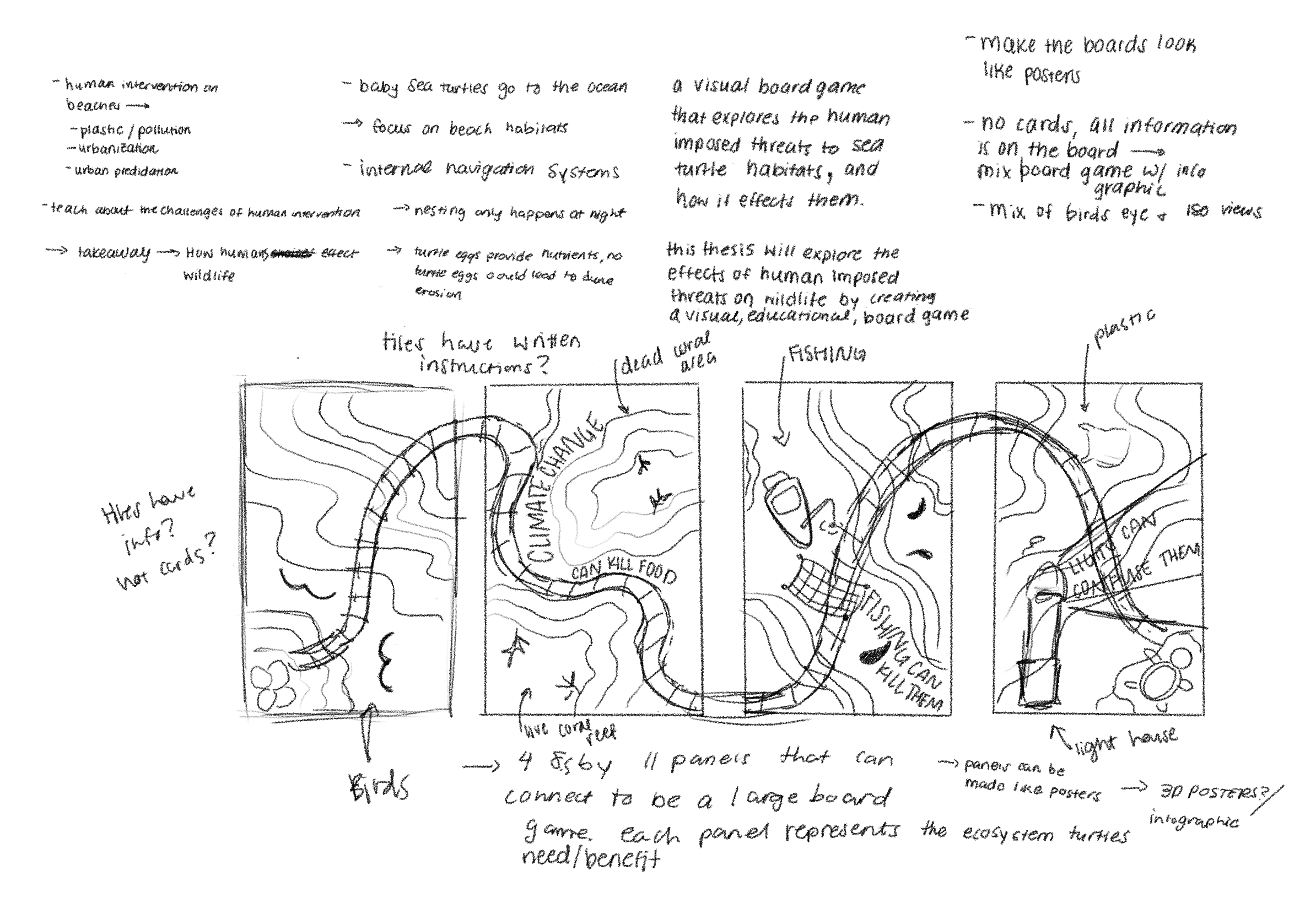
FINAL DIRECTION
After many iterations and brainstorming, I decided to explore a design that merged a storybook illustration style with the 2D/3D construction method. This gave the game personality, and It gave me a chance to incorporate my drawing skills into the project. The outcome would be four boards that connected and referenced the environments sea turtles inhabit during their migration path.

base illustration

rough illustration layout
ILLUSTRATIONS
The illustrations are a mix of designs for crafted elements, as well as flat illustrations. The lighthouse, boats, and paper turtles were drawn to allow more depth when constructed. Smaller elements like shells, corals, greenery, and plastic bottles were made to be secondary elements, and were flat objects. However they were still raised to match the dimensional look of the game.
CONSTRUCTION
When constructing the game, I went through multiple test phases to figure out the best method to construct the boards. Using a cutting machine, I printed out all the elements, covered them in clear vinyl to protect the ink from fading, and fed them through a machine to make sure I got a clean and precise cut. Afterward, I used foam tape to raise the pieces to their desired height.
As for the path, I thought it would be best to have the path conform to the environment I was creating to keep the philosophy of design first, and making the game layout influenced by the design. The path tiles are magnetic which allowed the game to be functional if hung on a wall.
GAME PLAY
The game play focuses on education, and was designed so that the board is self-sufficient, with few excess pieces so that it can be easily played vertically.
Each turn starts with spinning the compass that will give players a direction. The compass gives the players two choices. The tiles give secondary direction that will be completed once landed on. Blank tiles have no direction. This was to limit the use of loose cards.
The path is not structured which allows the gameplay to be randomized. Unless directed otherwise, players are free to move in any direction as long as its forward.
Instruction card
To fit the paper craft aesthetic, I decided to create a custom die-cut instruction card.
Game pieces
For the game, as the player would be following the migration path of turtles, I decided to make little turtles out of clay. I stuck magnets on them so that they could be used if the game were being played vertically.
FINAL OUTCOME
The final produced outcome was a storybook-esque board game that merged interaction with visual storytelling to create an engaging and educational experience for all ages. I hope that this project attracts people to look closer and learn something new about the world around us, and encourage people to learn about what they can do to help.

